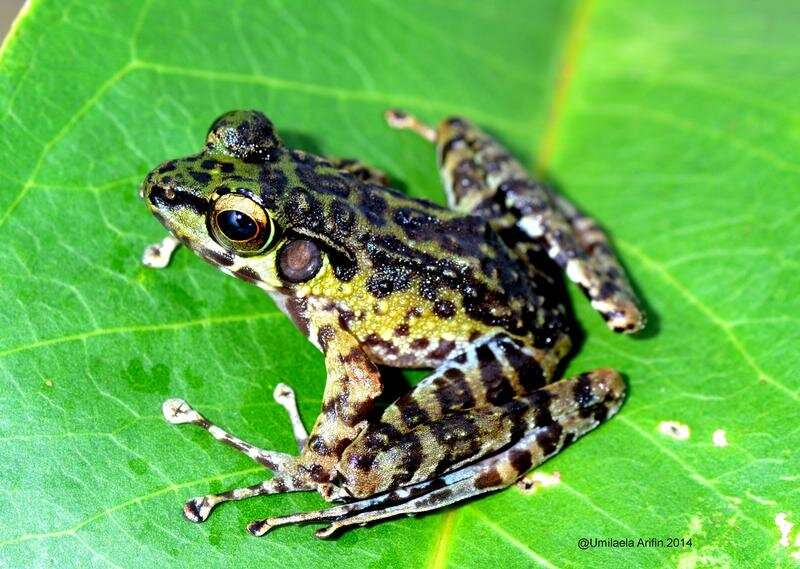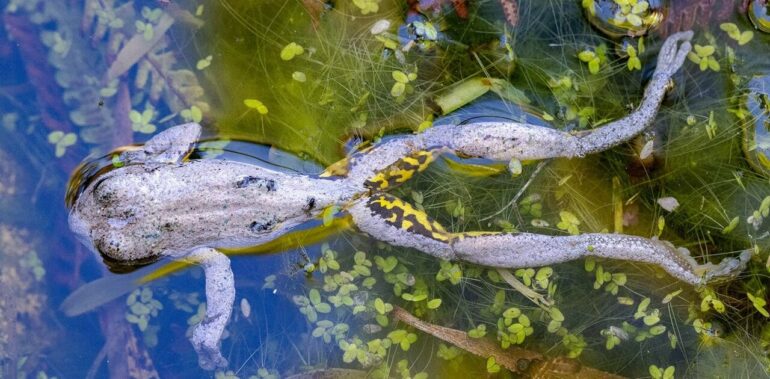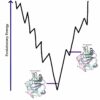Is the geographical history of Sundaland closely linked to the evolution of the native Sumatran cascade frogs? This question was investigated by an international team led by herpetologist Umilaela Arifin of the LIB in their latest study, which was recently published in the scientific journal Scientific Reports. They assumed that these frogs have already dispersed in Sundaland way before the formation of the watersheds in this region, which took place during the Pleistocene—the Earth’s history about 2.5 million to 11,650 years ago. These findings challenge previous assumptions by experts.
Rivers are considered natural barriers that strongly influence the distribution of the species to certain landmasses. Sundaland—a geographical region in Southeast Asia that includes the islands of Java, Borneo and Sumatra—is considered by experts as an important hotspot for biodiversity. Until now, researchers argued that the regional watershed was one of the most important factors in segregating the species on these islands from each other genetically. However, this hypothesis was tested by an international team led by Dr. Umilaela Arifin, a Marie Curie Researcher at the Museum of Nature Hamburg in their recently published study.
Using two genera of Sumatran cascade frogs, Sumaterana and Wijayarana, the researchers traced their evolutionary history: “We select these genera, which we described in our previous studies, because their tadpoles rely heavily on cascading stream habitats, as shown by the possession of a large sucker on their abdomens—a condition called gastromyzophory, to adapt in such environment,” says Umilaela Arifin.
She and her team did not find any correlation between their dispersal patterns and the geographical formation of the river systems in their evolution. “Our time-calibrated phylogenies and biogeographical models suggest that Sumaterana and Wijayarana colonized the island of Sumatra from mainland Asia approximately 25.11 and 27.65 million years ago, respectively. Surprisingly, this is much earlier than the formation of the Sumatran drainage systems, which came into existence during the Pleistocene,” Arifin says.

The genus of Sumatran Cascade Frogs Sumaterana studied by the researchers. © LIB, Arifin
Amphibians go through biphasic life cycles—this means that, according to Arifin, they might have dispersed across Sundaland in two ways: via river when they were larvae and via land when they become adults. Consequently, the spatio-temporal development of the two genera is probably much more complex than previously thought by experts based on hypothesis tested using fish and mud snakes, which are more restricted in terms of their dispersal routes. The current study further suggests that the diversification of Sumaterana and Wijayarana appear to be geographically oriented largely along the alignment of the Bukit Barisan Mountain range. This range stretches from the north to the extreme south of Sumatra without interruption.
The authors conclude that Sumaterana and Wijayarana underwent rapid evolutionary divergence from the late Miocene (3.03 to 5.33 million years ago) or early Pliocene (5.33 to 2.59 million years ago), primarily due to episodic cooling and warming of the climate and the resulting cyclic lowering of sea level during this period.
This work is the first to leverage modern biogeographical approaches to elucidate the evolution of these Sumatran cascade frogs with gastromyzophorous tadpoles, Dr. Arifin explains that their “findings show that the establishment of a stable taxonomy for the Sumatran cascade frogs with gastromyzophorous tadpoles, combined with thorough documentation of their geographic distribution are important steps forward towards a better understanding of the diversification patterns and processes of the hyperdiverse tropical rainforests of Sundaland.”
More information:
Umilaela Arifin et al, Phylogeographic inference of Sumatran ranids bearing gastromyzophorous tadpoles with regard to the Pleistocene drainage systems of Sundaland, Scientific Reports (2022). DOI: 10.1038/s41598-022-14722-9
Provided by
Leibniz-Institut zur Analyse des Biodiversitätswandels
Citation:
Did rivers influence the evolution of Sumatran cascade frogs? (2022, August 26)



